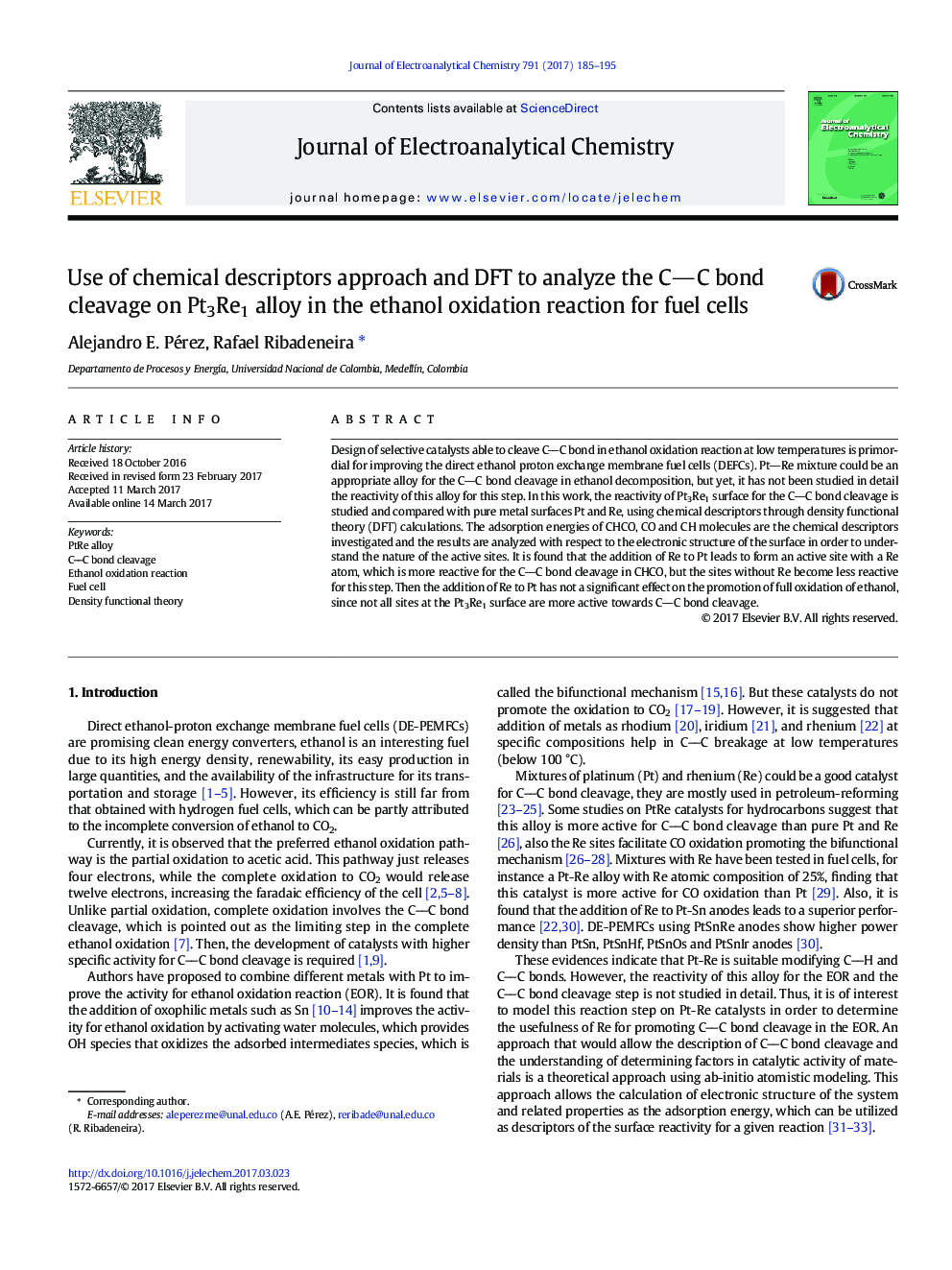| Article ID | Journal | Published Year | Pages | File Type |
|---|---|---|---|---|
| 4907971 | Journal of Electroanalytical Chemistry | 2017 | 11 Pages |
â¢The methodology of chemical descriptors is applied to describe the CC cleavage.â¢Not all sites at the Pt3Re1 surface are more active towards CC bond cleavage.â¢Sites with Re in Pt3Re1 and pure Re phase has higher activity in CC bond cleavage.â¢Overall effect of Re addition to Pt on the CC cleavage is not strong as expected.
Design of selective catalysts able to cleave CC bond in ethanol oxidation reaction at low temperatures is primordial for improving the direct ethanol proton exchange membrane fuel cells (DEFCs). PtRe mixture could be an appropriate alloy for the CC bond cleavage in ethanol decomposition, but yet, it has not been studied in detail the reactivity of this alloy for this step. In this work, the reactivity of Pt3Re1 surface for the CC bond cleavage is studied and compared with pure metal surfaces Pt and Re, using chemical descriptors through density functional theory (DFT) calculations. The adsorption energies of CHCO, CO and CH molecules are the chemical descriptors investigated and the results are analyzed with respect to the electronic structure of the surface in order to understand the nature of the active sites. It is found that the addition of Re to Pt leads to form an active site with a Re atom, which is more reactive for the CC bond cleavage in CHCO, but the sites without Re become less reactive for this step. Then the addition of Re to Pt has not a significant effect on the promotion of full oxidation of ethanol, since not all sites at the Pt3Re1 surface are more active towards CC bond cleavage.
Graphical abstractDownload high-res image (144KB)Download full-size image
